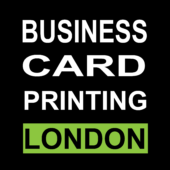Designing a Standout Business Card: A Comprehensive Guide
In today’s competitive business landscape, standing out is crucial, and one of the most tangible ways to make a lasting impression is through a well-designed business card. A business card serves as a direct representation of your brand and personality, making it essential to create a design that effectively communicates your message. Whether you’re a freelancer, entrepreneur, or corporate professional, here’s a comprehensive guide to designing a standout business card that leaves a lasting impression.
1. Define Your Brand Identity: Before diving into the design process, it’s crucial to have a clear understanding of your brand identity. Consider your brand colors, typography, and overall aesthetic. Your business card should seamlessly align with your brand’s visual identity to ensure consistency across all touchpoints.
2. Choose the Right Size and Shape: While traditional business cards are typically rectangular, don’t be afraid to think outside the box. Experiment with unique shapes and sizes that reflect your brand personality. However, keep in mind practicality – your card should still fit comfortably in a standard wallet or cardholder.
3. Prioritize Legibility: Your business card should be easy to read at a glance. Choose a font that is clean, legible, and reflects your brand’s personality. Avoid using overly decorative or elaborate fonts that may compromise readability, especially when printing in small sizes.
4. Incorporate Visual Elements: Visual elements such as logos, icons, or graphics can enhance the overall look of your business card and reinforce your brand identity. However, ensure that these elements complement the design without overwhelming it. Balance is key to creating a visually appealing business card.
5. Utilize White Space: Don’t overcrowd your business card with excessive information or design elements. Embrace white space to allow your design to breathe and draw attention to key elements. White space can also make your card look more sophisticated and professional.
6. Choose High-Quality Materials: The quality of your business card speaks volumes about your brand. Opt for high-quality materials such as thick cardstock or specialty finishes to convey professionalism and durability. Consider additional finishes like embossing, foil stamping, or matte/glossy coatings to add a tactile element to your card.
7. Include Essential Information: While it’s important to keep your business card design visually appealing, don’t forget its primary function – to provide contact information. Include essential details such as your name, job title, company name, phone number, email address, and website URL. You can also include relevant social media handles if space permits.
8. Make it Interactive: Consider incorporating interactive elements into your business card design to create a memorable experience for the recipient. This could include QR codes linking to your portfolio or website, or even augmented reality features for a truly innovative touch.
Conclusion: Designing a standout business card is a creative process that requires careful consideration of your brand identity, visual elements, and practicality. By prioritizing legibility, incorporating visual elements, and choosing high-quality materials, you can create a business card that effectively communicates your message and leaves a lasting impression on potential clients and collaborators. Remember, your business card is more than just a piece of paper – it’s a powerful marketing tool that represents your brand wherever it goes.
